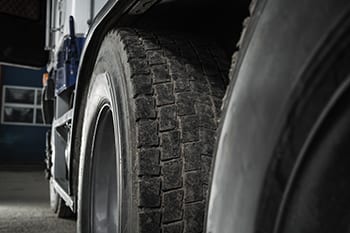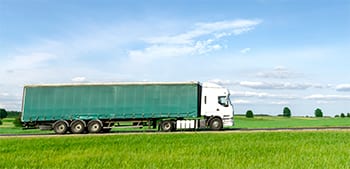Is it possible to achieve sustainability in regards to our roads and highways? What about our trucks and cars?
The United States is a country built around the automobile industry. Owning a car is more than a necessity and convenience. It is a sense of pride and part of our identity. In 1956 President Eisenhower signed the Federal-Aid Highway Act into being, and with that came a monumental Sustainable
Transportation system and public works task to create the highway network and cultural phenomenon that still resides at the core of who we are today.
Americans use their cars for everything: running errands, visiting friends, commuting to work, and the simple pleasure of driving. Hopping in the car and going, with no destination in mind, is a common pastime. Getting out for a drive gives many people a sense of freedom, and the automobile itself is a symbol for the American idea of what it means to be free. So, can the U.S. really build a sustainable transportation system?
Sustainable Transportation Defined
According to Statista, in 2019, our country produced 5.139 billion metric tons of CO2, and of that, nearly one third comes from the transportation industry. Reducing this carbon footprint could contribute significantly to the reduction of greenhouse gases. To do so would be no easy feat, however. The costs and scale of infrastructure required is one thing. Changing people’s perceptions and cultural values is another.
What is sustainable transportation? There are three components to the definition.
The first requires that the system provides for the mobility needs for today’s citizens without compromising the ability of the system to provide for the needs of future generations. The second component requires that the transportation industry meet mobility goals while causing the least harm to the environment possible. The third aspect requires the system to be affordable and provide a benefit to the economy.
The current favored mode of transportation in the U.S. meets none of the characteristics of sustainable transportation. The vast amount of oil fueling our cars is a significant contributor to climate change. Thus jeopardizing the environment through CO2 emissions and other pollutants. as well as through the damage from the extraction process itself. Oil is also a finite energy source. We have already begun to move past the low-hanging fruit for easily accessible oil extraction, and the energy return for energy invested is declining.
Sustainable Transportation Features
There are a number of features inherent in a sustainable transportation system that does not require the wholesale ban of the automobile. Buy-in for that concept would be impossible, and it is unnecessary. What does need to change is vehicle construction and energy sources, accessibility to goods and services, and infrastructure for alternative transportation modes?
Vehicle Construction
Cars today are made primarily from a combination of steel and fiberglass. Some of these parts, specifical steel, are conducive to recycling, but they are heavy and require more energy to power. Even with today’s hybrid models, fuel efficiency could be improved with lighter materials for the vehicle and the battery. Innovations in composite materials have the potential to lower the weight without sacrificing safety.
An automobile’s energy source is its biggest downfall in terms of sustainability. Decreasing greenhouse gas emissions requires a larger-scale effort for alternative fuels. President Trump’s most recent policy turning back the clock on fuel efficiency requirements does nothing to help this movement along. Consumer demand still has the potential to drive changes in this arena. But it will likely take a change in administration before conditions are favorable to tackling the vehicle emissions issue.
Accessibility to Goods and Services in Transportation System
The initial movement to suburban sprawl had a significant impact on how often Americans are required to drive. Places to work, shop, and recreate are frequently concentrated in areas that are separated from where people live, and often by a significant distance. In addition, citizens in rural communities frequently have to travel to urban locations. It is to meet at least some of their needs.
Compartmentalizing community structure requires more travel. Planning cities and communities around accessibility to goods and services will reduce the need for vehicle usage. There has been some movement in this regard. City managers and planners are now doing more towards strategic land-use and urban development.
To incorporate multiple-use zones that allow both residential and commercial permitting, even on a single lot. At the very least, decreasing the distance to shopping areas, parks and workplaces reduce miles driven in a single outing. Increases in the number of people telecommuting would also have a significant positive impact on driving frequency.
Infrastructure for Alternative Transportation Modes in Transportation System
Infrastructure changes go hand-in-hand with accessibility planning. As the car grew in popularity, neighborhood, community, and city designs favored roads over sidewalks, bike lanes, and rail. A drive down many a quiet suburban street will reveal a distinct absence of sidewalks.
Roadways are frequently constructed at a width just sufficient for car traffic and parking. Public rail is only minimally developed. With the exception of a few densely populated metropolitan areas, like New York and Chicago.
Moving goods and services closer to where people live needs to be combined with creating walkable and bikeable cities. This would involve creating safe bike lanes and more sidewalks in lieu of widely available parking. To encourage the use of legs and bikes over vehicles for short-distance outings. Reducing traffic on the roads would also create a more pleasant environment for human-powered transportation.
While the car will not disappear, more can be done to encourage public transportation. The rail system in the U.S. leaves much to be desired. High-speed rail for long-distance travel would be a great benefit. As long as it was also affordable. And inter-city and city rail systems can provide quicker commutes that would complement bus systems.
Conclusion
Driving is still the most favored mode of transportation in the U.S. Many Americans will hop in their car to drive down the block to a friend’s house, rather than walk. However, there is a great deal to be gained in public and environmental health. By putting our efforts into a sustainable transportation system we can achieve that.
With the current abysmal state of infrastructure in the U.S. The time is now ripe for the type of public works policy Eisenhower implemented in the ’50s. Geared this time towards sustainability. Perhaps, then, the biggest shift required to move us in the right direction is our own perceptions of the automobile.
What do you think of the topic? Make sure to drop your thoughts in the reply box.



